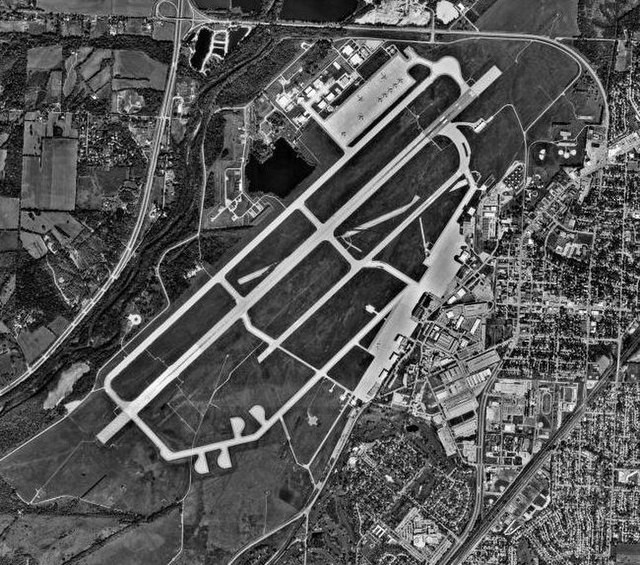Drone activity caused a temporary shutdown of airspace over Wright-Patterson Air Force Base in Ohio late Friday, disrupting operations at one of the most critical military installations in the United States. The airspace was closed for nearly four hours as officials monitored the incursions, raising new questions about security vulnerabilities near sensitive military sites.
Bob Purtiman, chief of public affairs for the 88th Air Base Wing, confirmed that the base identified several small unmanned aerial systems (UAS) in its vicinity. "Installation leadership has determined that none of the incursions impacted base residents, facilities, or assets," Purtiman told local media. However, the unusual activity prompted security measures and highlighted growing concerns over unauthorized drone operations near military infrastructure.
The incident, first reported by The War Zone, marks the latest in a string of mysterious drone sightings near critical installations across the United States, including Picatinny Arsenal and Naval Weapons Station Earle in New Jersey. These sightings have sparked alarm among residents and law enforcement while highlighting gaps in airspace security.
In audio recordings from Wright-Patterson's air traffic control tower, a controller can be heard advising extreme caution due to "heavy UAS movement." Flights over the base were redirected, and the area's airspace, typically restricted to authorized aircraft, was temporarily shut down. Base operations resumed early Saturday without reported injuries or damage.
Wright-Patterson Air Force Base, located near Dayton, Ohio, plays a vital role in U.S. defense strategy. It houses key military units, including the Air Force Research Lab and the National Air and Space Intelligence Center, which are tasked with analyzing air, space, and cyber threats. The base is also home to the 655th Intelligence, Surveillance, and Reconnaissance Group, as well as the National Museum of the U.S. Air Force.
Purtiman emphasized that the base's leadership is taking appropriate measures to safeguard personnel and assets. "Our team continues to monitor the local airspace and is working closely with local authorities to ensure safety," he said.
The surge in drone activity near military sites has not been limited to domestic incidents. In November, British air bases used by the U.S. Air Force also reported unauthorized drone incursions, adding an international dimension to the issue. Despite the heightened activity, officials have urged calm, stating there is no evidence of a national security threat.
Former FBI Supervisory Special Agent Tom Adams suggested that some recent drone sightings could result from copycat behavior spurred by media attention. "I think we're looking at a few different things. First, I do believe that there are probably some legitimate visual drone sightings by alert residents and law enforcement in New Jersey," Adams told CNN.
Rob D'Amico, a former chief of the FBI counter-drone unit, estimated that over 90% of reported drone sightings are likely misidentified objects or manned aircraft. However, he warned that the surge in incidents exposes significant gaps in airspace security. "They have to start telling the people and other government officials what they're actually doing, what they're seeing... the more transparency," D'Amico said.
The Department of Homeland Security and local law enforcement are investigating the Ohio incident, striving to identify the source of the drones. TThe Federal Aviation Administration (FAA) prohibits unauthorized drone operations within restricted zones around military bases. Violators face steep penalties, including fines and potential criminal charges. The FAA continues to work with law enforcement to investigate such incidents and enforce regulations.
Wright-Patterson's temporary shutdown underscores the increasing need for robust counter-drone measures, particularly as drones become more accessible to the public. While officials maintain there is no immediate threat, the incident serves as a stark reminder of the challenges posed by advancing drone technology near sensitive sites.






